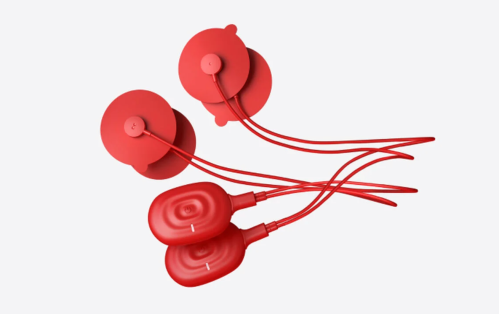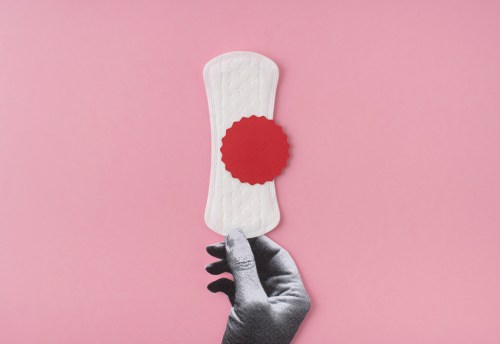Our editors independently select these products. Making a purchase through our links may earn Well+Good a commission
Menstruation can be different for everyone. Some folks have heavy bleeding and cramps, while others have awful pelvic pain with lighter bleeding. Some folks float through their cycles without much fanfare. Some feel cramps after putting in their tampon. It’s all a mixed bag, which means that blanket suggestions for pain management often fall flat.
Experts in This Article
board-certified OB/GYN and chief medical officer at Seven Starling
I, for one, am always looking for remedies for the cramps that strike out of nowhere every so often. I’ve tried it all: cooling CBD cream, a topical nonsteroidal anti-inflammatory drug (NSAID) called Voltaren, ibuprofen, heating pads, and just plain bearing it. All of these have yielded varying levels of success, but I am always open to trying new things. Most recently, I came across the Therabody TENS unit Power Dot 2.0 Duo and decided to test it out.
PowerDot 2.0 Duo

PowerDot 2.0 Duo — $340.00
The smartest muscle stimulator in recovery
What is a TENS Unit
A TENS unit, or a Transcutaneous Electrical Nerve Stimulation unit, is a battery-powered device that uses small electrodes on the skin to send low voltage electrical impulses into the muscle tissue, says Amy Roskin, MD, a staff obstetric gynecologist at the reproductive care startup Favor. TENS units are used to treat a variety of painful conditions
A recent literature review published in the International Journal of Women’s Health examined studies that focused on the use of these devices for dysmenorrhea (the clinical term for period-induced cramps and pelvic pain) and found that TENS usage was associated with improvement in menstrual cramps. Researchers concluded that there is convincing evidence that TENS units are beneficial for period symptoms. Those who used the devices had less pain and related symptoms, used fewer analgesic medications, and reported improved quality of life.
There are numerous theories about why exactly a TENS unit helps with pain, according to the Cleveland Clinic. One theory posits that the electric current stimulates the nerves involved in sending messages of pain to the brain, i.e., halting the experience of pain, Dr. Roskin says. The other theory is that these devices’ nerve stimulation can elicit endorphins. Endorphins are a naturally pain-killing hormone in the brain, the Cleveland Clinic says, which works by blocking the brain’s perception of pain.
Is this a new option
Therabody, a startup well known for its percussive therapy devices, has released the Powerdot 2.0 to offer an alternative form of muscle recovery or soreness and pain relief. TENs units seem like high-tech devices; however, the first consumer models of TENS units were introduced to the market in 1974, according to the British Clinical Pain Journal, and can currently be purchased online for as low as $30. Therabody’s Powerdot comes in at a hefty $340—a price significantly higher than the average cost, but, in my experience, it does work wonders and offers a fairly seamless user experience.
I was actually cramping when I received the device, so I applied the sticky pads to my abdomen, connecting them to their “electrode hubs.” Then I pulled out my phone to download the app, which controls intensity levels and stimulation patterns, and collects helpful post-session data. The app was pretty seamless to use; all I had to do was connect it via Bluetooth and select where I was placing the nodes on my body.
The sensation of the TENS unit is quite odd, to say the least. The word that comes to mind is”squiggly.” The electrode stimulation sends a ticklish feeling into the muscle tissue. But once I got past the odd feeling, I kind of forgot about the TENS unit and, eventually, my pain. It is gradual, but the tension and discomfort fade at the end of the 30 or 40-minute sessions. The pain relief lasts for a few hours for me, but it will likely be different for everyone.
The unit looks pretty cool on your body, if I say so myself. I feel like a cyborg when using it. However, the adhesive pads lose their stickiness over time, and according to Therabody, they need to be replaced after 25 uses. I try to be cautious with how often I restick the pads to my skin so I can conserve their adhesiveness.
I love this device, but there are people who definitely should not use it, Dr. Roskin says. Anyone that is pregnant, has epilepsy, cancer, heart failure, or an implanted medical device (like a defibrillator) should consult a provider before testing a device like this, as it is generally not recommended. Additionally, as with any medical device, you should check in with your doctor before experimenting.
All in all, I recommend using a TENS unit for pain, and Dr. Roskin confirms that they are effective. If you’re on the fence, you can test out lower-cost products, but the Powerdot 2.0 does offer a lot of intuitive options that baseline TENS units on the market do not (think: Bluetooth connectivity, program options, a compact case, and phone controls).
Oh hi! You look like someone who loves free workouts, discounts for cutting-edge wellness brands, and exclusive Well+Good content. Sign up for Well+, our online community of wellness insiders, and unlock your rewards instantly.
Sign up for the Well+Good SHOP Newsletter
Get exclusive deals on wellness, beauty, fitness, and food products that have been hand-picked by our editors.
Got it, you've been added to our email list.











